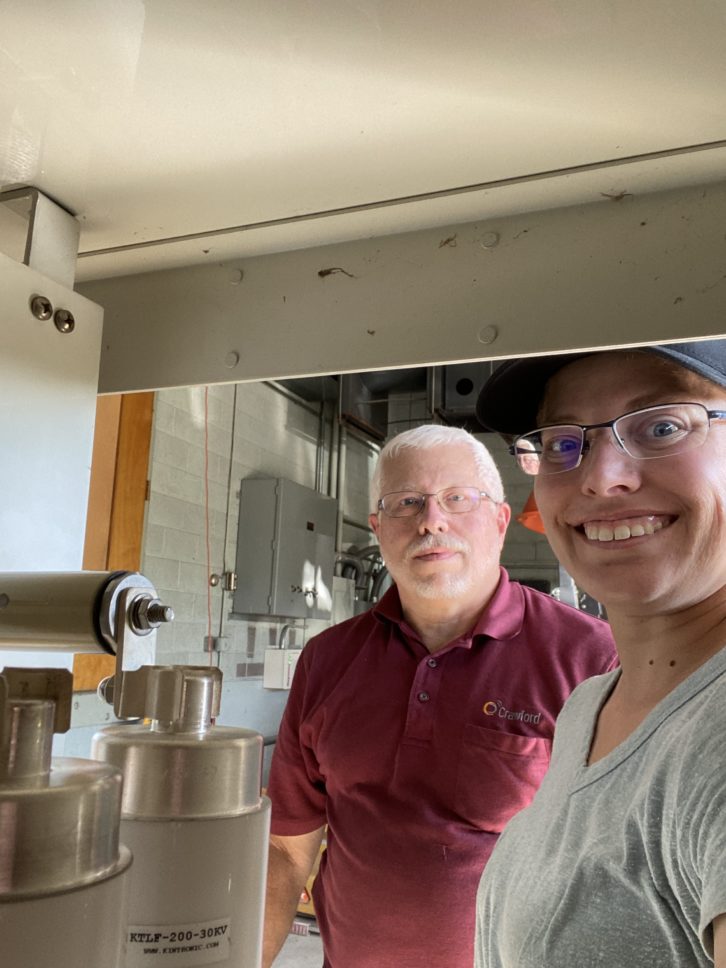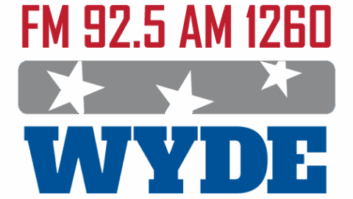In 1999, our company purchased another AM station in Denver to add to the three other stations it already had in the market. This particular station operated on 1220 kHz with 660 watts, diplexed with a 1 kW 1340 station into a tower on Denver’s iconic Ruby Hill.
We operated the station from that site for more than two decades while the site and the 1340 station changed hands several times.
Several years ago, we received a notice from the site owner that our lease would not be renewed at its expiration at the end of 2022. Apparently the site’s real estate value was such that its continued use as an AM broadcast site could not be sustained. At that point, we began looking for alternate sites.
Our initial plan was to move the station to the KLZ site, which was already shared with 810 kHz KLVZ for its nighttime facility. We would have to add one more tower to create a 500-watt two-tower array (sharing one of the 810 towers) and produce a shallow null to the north to protect a first-adjacent channel station in Laramie. All the engineering was done and we filed for and received an FCC construction permit for that move.
Some might wonder why we would even bother. After all, the values of “senior band” radio stations have decreased significantly in recent years, and we wouldn’t be the first to send in a license for an underperforming AM station for cancellation. But for us, the station had value and potential, so it was worth saving.
However, when the cost estimates came in for the filters and detuning apparatus that would have to be added to the four 810 and two 560 towers plus the phasing and coupling system for the new 1220 operation, it was clear that the cost to relocate the station to the KLZ site would far exceed the value of KLDC. We needed another plan.

Plan “B”
At that point, just a little over a year from the lease expiration at the Ruby Hill site, we began looking around for possible sites.
One that came to mind was a unique site a couple of miles south of Ruby in Englewood. It was a site we had looked at decades earlier for our then-800 kHz station. There had been two towers at the site, which was collocated with a building materials warehouse complex and commercial nursery.
Driving around the area, we could not find the 400-foot tower that had been on the north side of that site, but the 200-foot tower on the south end was still there. We found that the site was home to a 5 kW 1390 kHz station, KGNU.
At that point, we contacted the good people at KGNU and began negotiating a lease agreement with them. At the same time, we started on the allocation study, running a number of radials to determine the ground conductivity in several directions. The results showed that we could increase power to a full kilowatt, which would essentially replicate the full-market Denver coverage we had enjoyed for many years from the much taller tower at Ruby Hill.
Once we had an agreement with KGNU, we filed the construction permit application, modifying the CP we already had for the KLZ site. We got a grant in short order.
Certainly KLDC with its full-market Denver coverage had value to us, and the station had income, but certain economic realities were still in place. Spending $60,000 or more to move the station was out of the question. We had to do it for $20,000 or less. That was a tall order!
Back in 1999 at the old site, we had built a “budget” diplexer using a pair of surplus weatherproof cabinets from Kintronic Laboratories and a bunch of coils and vacuum capacitors left over from various projects around the company. Diplexing a pair of stations operating with 1 kW or less and with 120 kHz of separation was not a tall order, and that diplex equipment served us well for 23 years. It was those cabinets that we had our eye on for a new “home-brew” diplexer.
Cris started the design work for the diplexer in the spring of 2022, beginning with a set of impedance sweeps of the KGNU tower on 1220 and 1390 kHz. He worked the design using a list of surplus components that we had on hand as a pool to choose from in the design. All those components were manufactured by Kintronics and had been salvaged during upgrades and divestitures.

Go big
A diplexer that would handle 5 kW from one station and 1 kW from another would take some more doing than our old Ruby Hill low-power diplexer, and we would need some big coils to make it work.
With the design details all worked out and making maximum use of parts on hand, we still had a good list of new components we would need, including a pair of 92 uH 30-amp coils and a 42 uH 30-amp coil.
Cris worked through our list with Dr. Bobby Cox at Kintronics to work up a list of needed parts, including a new bowl insulator for the 1390-pass/1290-reject module, several fixed and variable vacuum capacitors and mounting hardware, silver-plated tubing, silver-plated strap, hardware, coil clips, 4-inch copper strap and insulators of various sizes along with fiber washers and studs.
In addition, we would need stands on which to mount the existing cabinets, including a prematch cabinet (another surplus Kintronics cabinet that had started its life housing the ATU for a 1530 station in Colorado Springs decades earlier) and the existing KGNU ATU cabinet (which was tab-mounted on Unistrut). It was quite a list and quite a pile.
One other item we would need for the project was a dual Cat-6 isolation choke that would allow us to couple a pair of Cat-6 cables across the base insulator for a tower-mounted all-ODU microwave link to the studio. That isolation coil was something totally new to us and we were eager to give it a try.
[Sign Up for Radio World’s SmartBrief Newsletter]
In due time, a liftgate truck came to the loading dock at our office and dropped off a large crate loaded with all the above parts and the isolation coil. We uncrated the contents and hauled it all out to the KLZ transmitter site, where the three-bay garage would serve as a temporary manufacturing facility for the new diplexer.
A plan was drafted for the move that would have minimum impact on all the stations except KLDC. A mid-September date was chosen that would likely provide for good weather (September weather along the Colorado Front Range is usually the best of the year) and would allow for completion well in advance of KGNU’s fundraiser in October.

Prep work
In anticipation of the Sept. 12 “D-Day,” we did as much of the preparatory work as we could. A new equipment rack was purchased and installed in the cellular-type Thermo-Bond prefabricated transmitter building at the KGNU site. Power was run to the new rack, a whole-rack UPS was installed and wired in.
With just room for one rack, the positioning of all the equipment in the rack, including the Nautel J1000 main transmitter, was carefully planned. Likewise, the placement of the prematch, diplex and ATU cabinets was mapped out with care. Appropriately sized HVAC-type prefabricated mounting pads were purchased and placed at the site.
The middle of August, we brought in a tower crew to install the microwave link on the KGNU tower. They hung the Kintronics dual Cat-6 isolation choke on the tower, and we bonded the bottom to the ground strap at the tower base and the top to the tower. We had to work through some equipment issues with the microwave link, but it did communicate with the choke. A new set of impedance sweeps was made to determine the effect of the choke, and the results were as expected, lowering the impedance by a few ohms.
In late August, we disconnected the Nautel ND-1 auxiliary transmitter at Ruby Hill and transported it to the new site, connecting its surge suppressor and power. We also bypassed and removed the main/aux/dummy antenna switch from Ruby Hill and hauled it and the dummy load to the new site and installed them.
Since both transmitters’ RF outputs were type-N, I opted to use N-female connectors on the antenna switch, so I ordered some panel-mount Amphenol N-female connectors and made some adaptor plates to allow me to mount them in the three-hole 7/8-inch EIA openings in the antenna switch. We used Commscope 1/2-inch “superflex” coaxial cable for all the KLDC high-level RF transmission at the new site.
With power, antenna switch and dummy load in place, we shortly had the aux transmitter making a kilowatt into the load. With other needed materials such as 3/4-inch rigid copper tubing and fittings, 3/4-inch PVC conduit and fittings, 3/4-inch liquid-tight conduit and fittings, wire, cable and all sorts of other things stockpiled at the site, we were as close to ready as we could be.
The final component of the plan was bringing longtime CBC-Birmingham Chief Engineer Stephen Poole to Denver to assist. Stephen is a very experienced broadcast engineer who has had charge of two of our AM stations for many years. His participation would be invaluable.
In our carefully crafted plan, we would take the Ruby Hill stations down on a Monday morning, remove both the diplex cabinets and the prematch cabinet, and haul them to the KLZ site. The contract engineer for the 1340 station was Eric Scace, who was also the contract engineer for KGNU. Cris had made a quick design for a simple tee-network ATU for the 1340 station, and Eric built that up in yet another surplus weatherproof cabinet. Once the existing diplex and prematch cabinets were out of the way, Eric would mount the new 1340 ATU in place of the prematch cabinet, connect and adjust it.
We would then haul the three Ruby Hill cabinets to the KLZ site, remove all the components and power wash them. After that, the “manufacturing” process would begin, with solving the three-dimensional puzzle of component placement the first order of business. Manufacturing and pre-tuning would wrap up on Tuesday, and we would haul everything to the KGNU site on Wednesday, taking KGNU down and installing the filter cabinets. The plan was to have both stations back on the air by the end of the day on Wednesday.
In the concluding part of this article, we’ll get down to nuts and bolts, drilling, mounting, plumbing, brazing and adjusting.
This is part one of a two-part series. Read Part 2 here.







